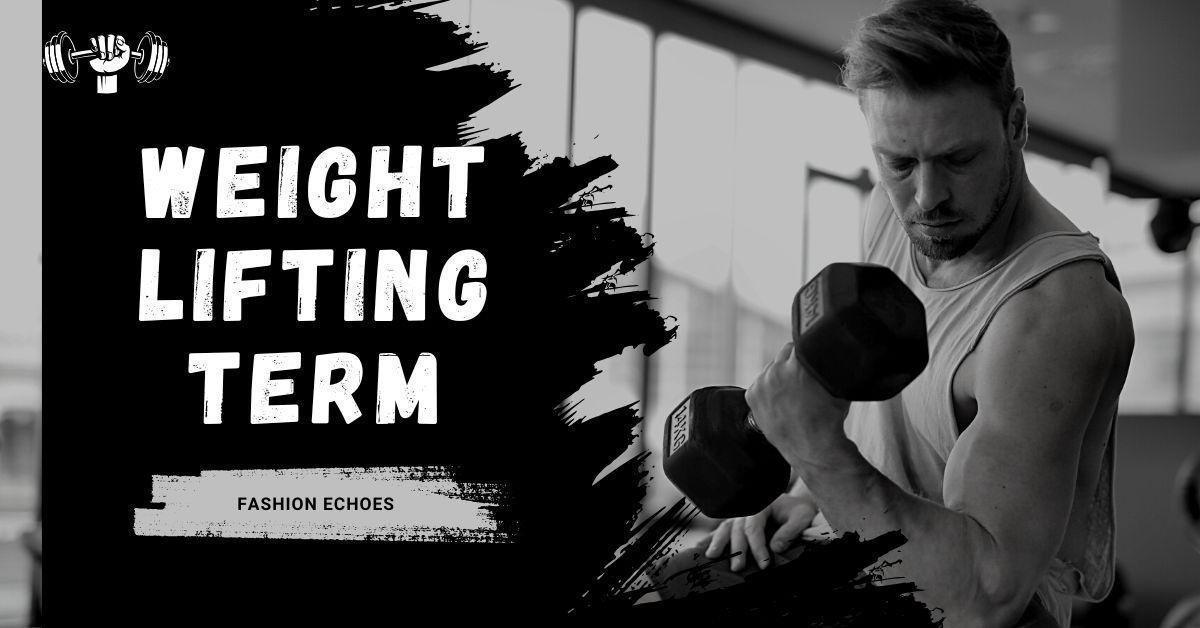Weightlifting term is a sport where participants lift barbells for exercise or competition.
Refer to weight training, bodybuilding, and powerlifting for other Weightlifting term-related term-related activities.
The Past
There is a long history of Weightlifting term. Lifting a unique rock was the traditional test of masculinity for many primitive societies. These manly stones can be seen in Scottish castles and Greece, some of which have the name of the first lifter engraved on them. Locally, stone lifting competitions are still practiced in Germany, Switzerland, the Basque region of Spain, and the Montenegrin highlands. In many of these competitions, the winner is determined by the consecutive number of lifts within a specified time frame.
Strong men who performed in theaters and circuses during the 18th and 19th centuries, like Louis Apollon of France, George Hackenschmidt of Russia, and Eugene Sandow and Arthur Saxon of Germany, are credited with giving rise to modern weightlifting competition. London was hosting an international competition by 1891. Weightlifting term competitions were a part of the Olympic Games in 1896, 1900, and 1904, but they were no longer held until 1920. The International Weightlifting Term Federation (Fédération Heterophile International; FHI) was established that year at the International Olympic Committee’s recommendation in order to oversee international competition and standardize events.
By 1928, only two-hand lifts remained, including the snatch, clean and jerk, and clean and press (detailed below), replacing the one- and two-hand lifts of previous Games. In 1972, the press was shut down.

French, German, and Egyptian weightlifters were the top performers at the pre-World War II Games. Up until 1953, American weightlifters dominated the post-war scene. After that, Bulgarian and Soviet weightlifters essentially controlled all global records and titles.
China, Greece, and Turkey were the top Weightlifting term nations by the late 1990s. Except for the war years, world championships took place in 1922–1923 and 1937, while European championships took place in 1924–1936. In 2000, a women’s weightlifting competition was added to the Olympic Games.

Tools
The barbell, a steel bar or rod with steel disk weights or cast iron affixed at either end on a rotating sleeve, is the weight used in contemporary competitive lifting. 25, 20, 15, 10, 5, 2.5, and 1.25 kg (55, 44, 33, 22, 11, 5.5, and 2.75 pounds) are the weights that have been added.
The three international lifts from 1928 to 1968 were the press (or clean and press), the clean and jerk, and the snatch. The barbell initially lies on the floor in every lift. A wooden platform that is 4 meters (13.1 feet) square is used for lift operations. Lifting is prohibited if a lifter leaves the platform while doing so.
In the snatch, the lifter is allowed to move his feet or squat beneath the barbell while he lifts it, then recover to an upright position. The barbell is raised from the floor to arm’s length overhead in a single, continuous, explosive movement. There are two components to the clean and jerk lift. With no limitations on the amount of time needed to finish the pull or on leg movements, the lifter jerks the barbell above to arm’s length after raising it to the shoulders. The lifter must finish both lifts with the barbell in control overhead, feet in line, body upright, and arms and legs extended.
The lifter has two options: wait for the referee’s signal before lowering the barbell back to the floor or keep the weight overhead for two seconds.
Additionally, the press was a two-part lift. The barbell was lifted to the lifter’s shoulders using the identical foot motion that was permitted for the clean and jerk. The lifter was then required to remain upright until the referee gave the all-clear, which was accomplished by pushing the barbell upward in a continuous, steady motion to arm’s length overhead without using the legs for support.
Weight categories There are eight body-weight categories (with upper limitations specified) for men’s competitions: 56 kg (123 pounds), 62 kg (137 pounds), 69 kg (152 pounds), and 77 kg (170 pounds).
Weight training is a method of physical conditioning that uses weight machines (such as Nautilus-style equipment) and free weights (such as dumbbells and barbells). Instead of being a competitive activity like Olympic Weightlifting term or powerlifting, it is a training regimen.
Even in ancient Greece, where Milo of Croton may have been the first strength athlete to become famous for his athletic achievements, there is evidence of weight training. It is said that he gained strength by lifting and carrying a newborn calf on his shoulders every day. The animal’s strength increased with his growth. The Milo technique of gradually increasing the load or resistance to increase muscular mass and strength has been proven to be a successful strategy for building strength in persons of all ages.
Aside from the fairly obvious gains in strength and muscle size, lifting weights or doing resistance exercises has many other advantages, such as increased bone density, improved muscle endurance, increased “good” cholesterol, improved posture, a slight increase in aerobic capacity, increased flexibility, decreased insulin resistance, and enhanced muscle endurance. Improved athletic performance, fewer injuries sustained in sports, the workplace, and daily activities, a lower fall rate, an overall rise in older persons’ spontaneous physical activity, and general health improvements are the results of these numerous advantages. Particularly remarkable is the value of disease prevention and treatment. For these reasons, countless national and international organizations advise the general population to engage in weight training.
Effective weight training regimens can range from as little as 20 minutes twice or three times a week for kids, teens, and older citizens to several hours a day for bodybuilders, weightlifters, and competitive and professional sports. Because different muscles and people have varying capacities for recovery, creating an exercise program necessitates striking a balance between strenuous exercises, sufficient recovery time between workouts, and healthy eating. Therefore, most lifters discover that a program that focuses on performing various powerlifting multijoint exercises (squat, bench press, and deadlift) three or four days a week yields the most significant benefit in the least amount of exercise time for all but the most experienced bodybuilders looking to add a few inches here and there to their bodies.
The weight used should be enough to make the final few repetitions fairly difficult, although the number of continuous repetitions (or “reps”) of an exercise movement, called a set, varies depending on the exercise and the primary objective. Since type I (“slow twitch”) muscle fibers have the most capacity for creating muscle volume, a comparatively large number of repetitions (10–12) is typically most efficient in developing these muscle fibers. Type II (“quick twitch”) fibers, which have the highest potential for producing bursts of strength or power, are best developed with fewer repetitions (2–4).
In terms of combined strength and size growth, intermediate repetition schemes (6–8) frequently yield the best results. According to physiological research, the stimulation of muscle growth increases significantly with each additional set performed from one to three, decreases with each additional set from three to four, increases marginally with each additional set from four to five, and increases very little with each extra set of a given exercise during an exercise session. It is typical to have rest intervals between sets of one to five minutes, with longer rests for lower repetition schemes. Lifters frequently alternate two or more exercise sets (a “superset”) without a rest period in order to shorten session durations.
A derivative of Olympic Weightlifting terms and weight training, powerlifting places greater emphasis on sheer strength than on speed, technique, or flexibility.
Weightlifters who believed that Olympic Weightlifting term competitions placed too much emphasis on technique and not enough on sheer strength created powerlifting, formerly known as odd lifts or strength sets, mainly in the United States and England. Hosted by the York Barbell Company and approved by the American Amateur Athletic Union (AAU), the first national powerlifting championships took place in York, Pennsylvania, in 1965. The International Powerlifting Federation was established in 1971, the same year that York hosted the first powerlifting competition in history.
Americans have dominated the sport since its inception. It has grown more popular in the US than Olympic Weightlifting, despite issues with the use of artificial lifting aids, the spread of performance-enhancing drugs, and conflicts between various federations, including those that are drug-free.
It is a competition with three lifts. Leg power is demonstrated via the squat, also known as the deep knee bend, in which the top of the lifter’s thighs must drop to or below parallel with the ground. Strengthening the upper body is demonstrated by the bench press, which is performed from a prone posture and requires a pause of the barbell at the chest. Overall back and grip power is demonstrated by the two-handed deadlift, in which the lifter raises the weight from the floor to hip level in a single motion. Lifters are permitted to attempt each lift three times with any weight they choose. The winner of each weight class is determined by adding the highest poundage in each category.






